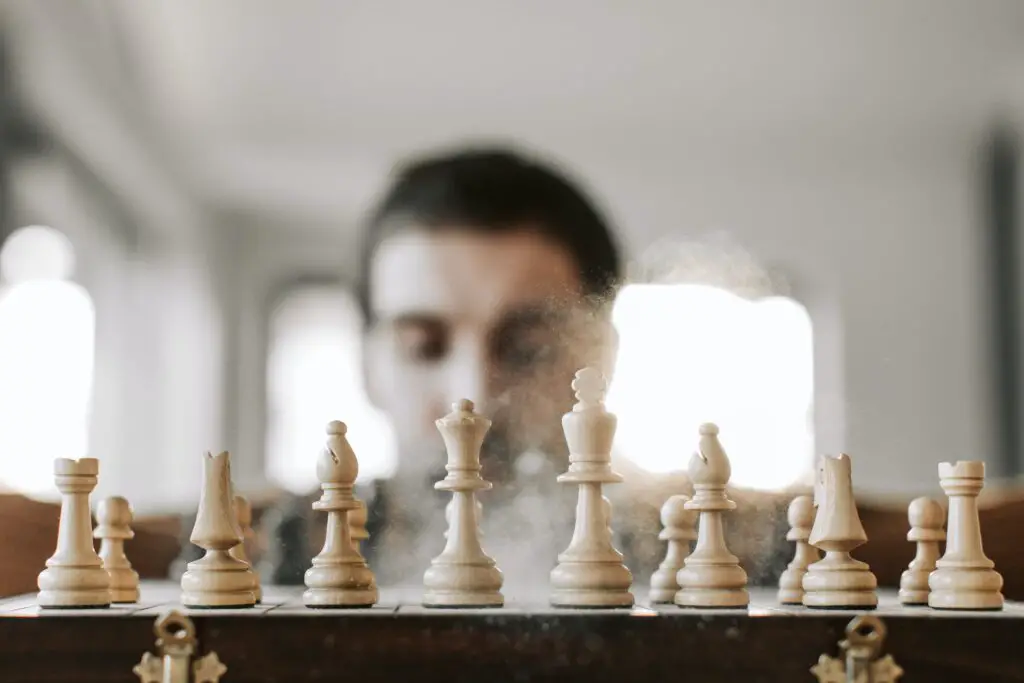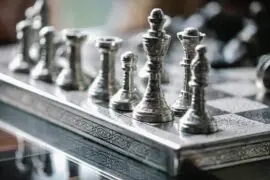Why is the Bishop Called the Sniper in Chess?
Contents
Chess, often referred to as the “game of kings,” is a timeless and intellectual battle of wits. The chessboard, an iconic battleground for two strategic masterminds, is populated with an array of pieces, each with its unique role. Today, we’re peering into the enigmatic world of chess and focusing on the enigmatic bishop, a piece with a mysterious alias – “The Sniper.” In this article, we’ll embark on a fascinating journey to unravel the secrets behind this intriguing nickname and uncover the strategic precision and historical significance of the bishop on the chessboard.

The Origins of the Nickname
Historical Context
To comprehend why we refer to the bishop as a sniper, we must first venture into the captivating history of chess. This game, with its roots stretching back over a millennium, has traversed continents and epochs, evolving with each culture it encountered.
Chess is believed to have originated in India, evolving from the game of chaturanga. As it journeyed from India to Persia, and then onwards to Europe, it underwent various transformations, including changes to the pieces themselves.

The Evolution of the Bishop Piece
Our story of the sniper bishop begins with the origins of the piece. Early depictions of the bishop portrayed it as an elephant, symbolizing the war elephants that were an integral part of Indian armies. These elephants were formidable forces on the battlefield, just as the bishop would become on the chessboard.
Over time, the elephant’s representation gradually transformed into the modern bishop we know today. With its diagonal movement, the bishop came to symbolize a different kind of power—a stealthy and precise attacker.
The Sniper’s Movement
The key to understanding why the bishop aptly earns the title “The Sniper” lies in its unique movement pattern. In stark contrast to other chess pieces, the bishop’s movement is confined to diagonals, enabling it to traverse both light and dark squares with ease. This diagonal mobility sets it apart and gives it a tactical advantage in the game.
Imagine the chessboard as a battlefield, and the bishop as a sniper perched atop a building, choosing its targets with surgical precision. The diagonal movement mirrors the calculated shots of a sniper, allowing the bishop to strike from a distance while maintaining a strategic position.
For example, consider a scenario where your opponent’s queen is situated in the center of the board, and you have a bishop positioned on a long diagonal. With a single move, your bishop can threaten the enemy queen, forcing your opponent into a challenging position.
The Significance of the Nickname
The Bishop’s Role in Chess
In the grand theater of chess, each piece plays a unique role. The bishop’s exceptional diagonal movement makes it a powerful asset in a player’s arsenal. It can control critical squares, exert influence over the board, and deliver devastating attacks on unsuspecting opponents. Just like a sniper on a mission, the bishop can alter the course of the game with a single, well-aimed move.
A classic example of the bishop’s power is its ability to control key central squares in the early game. Placing the bishop on a long diagonal, such as the f1-a6 diagonal for White or the f8-a3 diagonal for Black, exerts influence over crucial central squares, strengthening your position and limiting your opponent’s options.

The Sniper Analogy
The moniker “The Sniper” highlights the bishop’s precision. Similar to a sniper taking a calculated shot, the bishop can target and dominate specific areas on the chessboard. Its diagonal movements allow it to shoot through the smallest openings in the enemy’s defenses, often without detection until it’s too late. It’s the embodiment of calculated precision.
Famous Chess Players and the Bishop
Throughout the annals of chess history, numerous iconic players have demonstrated the bishop’s formidable potential. Legends like Bobby Fischer and Anatoly Karpov have showcased its capabilities, turning the tide of games through ingenious bishop maneuvers.
In a memorable game against Boris Spassky during the 1972 World Chess Championship, Fischer displayed the power of the bishop, leading to a stunning victory. Such games underscore the strategic brilliance of the sniper bishop.
Strategies Involving the Bishop
Effective chess strategies often revolve around exploiting the bishop’s unique abilities. In the opening, players frequently seek to develop their bishops to control and influence the board, positioning them to strike decisively in the middle and endgame. Bishop pairs, when employed correctly, create a formidable force that can dominate the board.
For instance, consider the “Bishop Pair” strategy, where a player successfully manages to maintain both bishops on the board. This dynamic duo can exert immense control over the board and prove to be a potent weapon.
The Bishop’s Limitations
While the bishop possesses several strengths, it’s not without its limitations. One of the key constraints is that it is confined to squares of a single color complex, meaning it can only cover half of the board. Astute players can capitalize on this limitation by controlling the other half of the board. To excel with the bishop, one must master the art of compensating for its weaknesses while maximizing its strengths.
Contemporary Chess and the Sniper
In the modern era, the nickname “The Sniper” remains relevant. Chess has evolved with technology, opening up new dimensions for the game. Yet, the strategic elegance of the sniper bishop continues to be a prominent feature of chess, and players continue to employ it with precision in tournaments and online matches.
Conclusion
In the grand tapestry of chess, the bishop stands out as a silent yet lethal operator. Nicknamed “The Sniper” for its precision and calculated movements, this piece embodies the art of subtlety and strategic brilliance. Understanding the historical context, evolution, and significance of the sniper bishop shines a light on the mystique surrounding this iconic chess piece. So, the next time you engage in a game of chess, pay special attention to the bishop—it might just be your secret sniper, poised to change the course of the game with one well-aimed shot.





